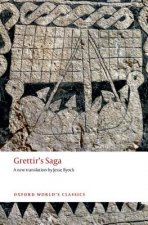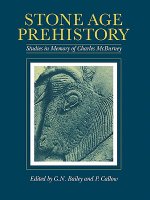
Code: 06312310
CASAS GRANDES AND ITS HINTERLANDS
by Paul E. Minnis
Casas Grandes, or Paquime, is one of the most important settlements in the prehistoric North American Southwest. The largest and most complex community in the Puebloan world, it was characterized by its principal excavator, Charle ... more
- Language:
 English
English - Binding: Hardback
- Number of pages: 242
Publisher: University of Arizona Press, 2001
- More about this

65.81 €
Availability:
50/50 We think title might be available. Upon your order we will do our best to get it within 6 weeks.
We think title might be available. Upon your order we will do our best to get it within 6 weeks.We search the world
You might also like
-

International Telecommunication Union in a Changing World
169.26 € -

Cold War University
28.27 € -4 % -

Complete Russian Folktale: v. 3: Russian Wondertales 1 - Tales of Heroes and Villains
225.72 € -

Federal Reserve
154.47 € -17 % -

National Wildland Fire Management Strategy
162.52 € -17 %
Give this book as a present today
- Order book and choose Gift Order.
- We will send you book gift voucher at once. You can give it out to anyone.
- Book will be send to donee, nothing more to care about.
Availability alert
Enter your e-mail address and once book will be available,
we will send you a message. It's that simple.
More about CASAS GRANDES AND ITS HINTERLANDS
You get 165 loyalty points
 Book synopsis
Book synopsis
Casas Grandes, or Paquime, is one of the most important settlements in the prehistoric North American Southwest. The largest and most complex community in the Puebloan world, it was characterized by its principal excavator, Charles Di Peso, as an outpost of the Toltec empire, which used it as a trade link between Mesoamerican and southwestern cultures.Michael E. Whalen and Paul E. Minnis have worked extensively in the Casas Grandes area and now offer new research arguing that it was not as similar to the highly developed complex societies of Mesoamerica as has been thought. In the first book of its kind in 25 years, the authors analyze settlement pattern data from more than 300 communities in the area surrounding Casas Grandes to show that its Medio period culture was a local development.Whalen and Minnis propose that Casas Grandes lacked extensive stratification, well-established decision-making hierarchies, and formalized positions of authority. They suggest instead that emerging elites used bribes, promises, and threats to build factions and extend their power. The communities at the periphery are shown to have had varying levels of interaction with Casas Grandes itself.This innovative study offers a new model for the rise and fall of Casas Grandes that departs considerably from the view most scholars have come to accept and will be of interest to all concerned with the comparative study of emergent complexity. It clearly shows that the idea of extensive regional centralization by Casas Grandes is no longer tenable and merits reconsideration by the archaeological community.
 Book details
Book details
Book category Books in English Humanities Archaeology Archaeology by period / region
65.81 €
- Full title: CASAS GRANDES AND ITS HINTERLANDS
- Author: Paul E. Minnis
- Language:
 English
English - Binding: Hardback
- Number of pages: 242
- EAN: 9780816520978
- ISBN: 9780816520978
- ID: 06312310
- Publisher: University of Arizona Press
- Weight: 539 g
- Dimensions: 237 × 160 × 23 mm
- Date of publishing: 01. March 2001
Trending among others
-

First Artists
20.12 € -28 % -

Lifeways of Hunter-Gatherers
34.51 € -14 % -

Horse, the Wheel, and Language
29.38 € -16 % -

Archaeology of Greece
35.31 € -9 % -

Horse in Human History
30.78 € -23 % -

Across Atlantic Ice
42.86 € -

Lady Sapiens
17.20 € -6 % -

Egyptian Hieroglyphs for Complete Beginners
16.39 € -11 % -

Lost Technologies of Ancient Egypt
22.13 € -14 % -

Bible Unearthed
21.93 € -

War before Civilization
25.85 € -

Petra
8.24 € -28 % -

Magicians of the Gods
14.88 € -13 % -

Seismosaurus
97.20 € -

Dress Accessories, c. 1150- c. 1450
33.60 € -16 % -

Complete Pompeii
20.22 € -28 % -

Treasures of the Valley of the Kings
33.20 € -6 % -

Cat in Ancient Egypt
11.26 € -28 % -

Grettir's Saga
14.88 € -28 % -

Divine Creatures
20.22 € -22 % -

Lewis Chessmen: Unmasked
9.95 € -13 % -

Omm Sety's Abydos
17.70 € -6 % -

Houses and Monuments of Pompeii - The Work of Fausto and Felice Niccolini
79.59 € -10 % -

Ancient Nubia
65.71 € -11 % -

In Search of the Indo-Europeans
29.98 € -15 % -

Biblical Archaeology: A Very Short Introduction
9.25 € -28 % -

Book of Enoch
26.96 € -24 % -

Ice Age Peoples of North America
96 € -

Mesolithic Europe
127.09 € -

American Beginnings
78.08 € -

Stone Age Prehistory
43.67 € -

Prehistory: A Very Short Introduction
11.56 € -18 % -

Her Cup for Sweet Cacao
66.81 € -9 % -

Salt in Prehistoric Europe
33.40 € -9 % -

Prehistoric Rock Art
30.99 € -15 % -

Against the Grain
20.12 € -12 % -

Medieval Household
48.70 € -19 % -

Complete Cities of Ancient Egypt
28.67 € -18 % -

First Signs
12.87 € -36 % -

Mesolithic Europe
70.13 € -

Scenes from Prehistoric Life
27.16 € -22 % -

Neanderthal Legacy
52.12 € -

Prehistory Of The Mind
15.19 € -28 % -

Kindred
20.52 € -29 % -

Oxford Handbook of the Bronze Age Aegean
77.48 € -

Aegean Art and Architecture
22.23 € -28 % -

Egyptologists' Notebooks
34.91 € -22 % -

Rise of Bronze Age Society
81.10 € -

Religion and Ritual in Ancient Egypt
27.06 € -23 %
Collection points Bratislava a 2642 dalších
Copyright ©2008-24 najlacnejsie-knihy.sk All rights reservedPrivacyCookies


 15549 collection points
15549 collection points Delivery 2.99 €
Delivery 2.99 € 02/210 210 99 (8-15.30h)
02/210 210 99 (8-15.30h)